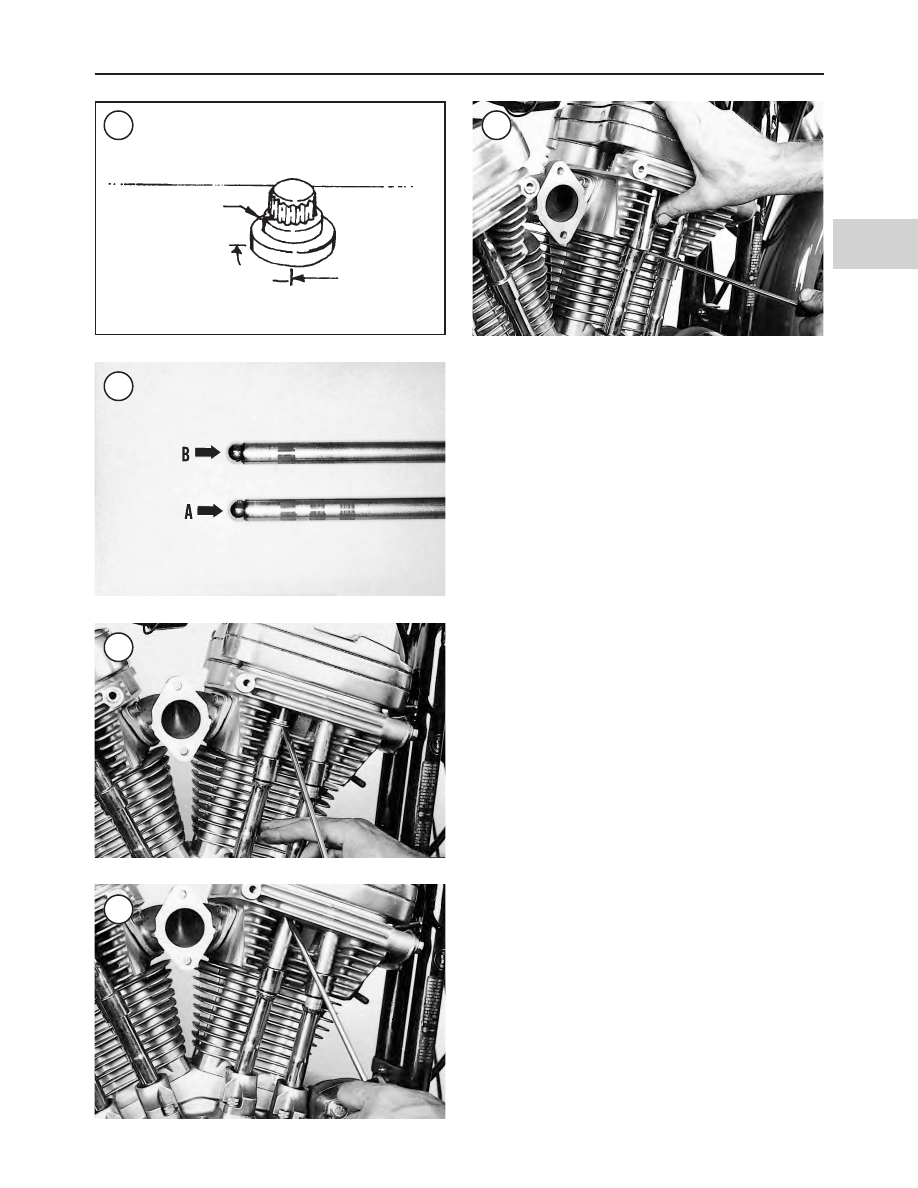Harley Davidson 1986-2003 XL/XLH Sportster. Service Manual - page 16

d. Make sure that each pushrod is seated in the top of its
respective tappet.
11. Install the rocker covers as described in this chapter.
12. Install the intake manifold as described in Chapter Ten
or Chapter Eleven.
13. On 1986-1990 models, position the upper pushrod
covers using the following procedure:
a. Push the upper pushrod cover up (Figure 53) and
seat it in the cylinder head (Figure 54).
b. Position the spring cap retainer as shown in Figure
55. Place a screwdriver under the retainer and lift the
screwdriver up slightly and slide the retainer into po-
sition.
14. Install the top center engine mount assembly (Figure
56) as follows:
a. Install the top center engine mount bolts and washers
through the engine mount.
b. Place the shim, if used, onto the top center engine
mount bolts as shown in Figure 56.
NOTE
Three different shim thicknesses are avail-
able: 0.030 in. (0.076 mm), 0.060 in. (1.52
mm) and 0.090 in. (2.27 mm). If the engine
cases, cylinder heads, top center engine
mount or frame were not replaced, the origi-
nal thickness shim can be installed. If one of
these major components was replaced, a dif-
ferent thickness shim may be required.
c. Install the top center engine mount onto the engine.
Insert the two engine mount bolts through the frame
so that the shim does not fall off.
d. Place the nut plate into position (Figure 56) and
thread the engine mount bolts into the nut plate hand
tight.
e. Install the VOES.
f. Tighten the engine bolts to 25-30 ft.-lb. (34-41 N•m).
g. Tighten the frame bolts to 30-35 ft.-lb. (41-47 N•m).
15. Install the top front engine mount bracket (Figure 57)
as follows:
ENGINE TOP END
165
4
51
Match mark
90°
Match mark
52
53
54
55